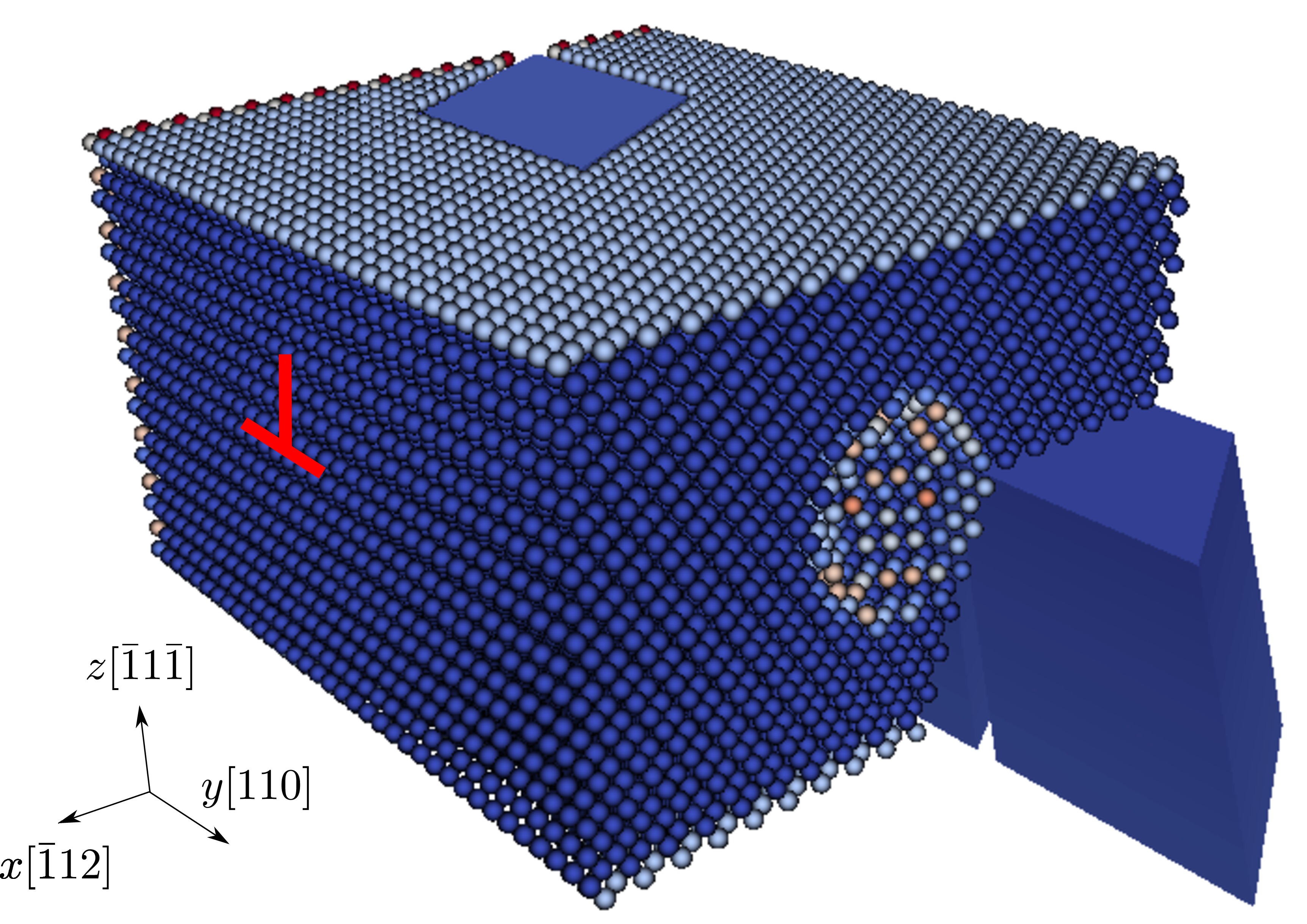Dislocation/obstacle interactions
FCC Ni, Mishin EAM potential, 2197 atoms per element in the coarse-grained domain. The spherical obstacle, with a radius of about 1 nm, is either a void or a precipitate. Results using larger models were presented at the 2017 MRS Spring Meeting.
Dislocation/void interactions
In the figure below, the atomistic domain is sliced on the xz plane for a better visualization of the void (atoms are colored by the atomic energy in the initial configuration). In the Langevin dynamic simulation, an edge dislocation on the (\bar{1}1\bar{1}) plane is first created; then subject to a \gamma_{zy} simple shear strain, it migrates toward the void and bypasses it following the shearing mechanism.

The movie below and the log fileare produced using the input file and rendered by OVITO:
Dislocation/precipitate interactions
In the figure below, the atomistic domain is sliced on the xz plane for a better visualization of the precipitate (atoms colored in white). In the Langevin dynamic simulation, an edge dislocation on the (\bar{1}1\bar{1}) plane is first created; then subject to a \gamma_{zy} simple shear strain, it migrates toward the precipitate and bypasses it following the Orowan looping mechanism.

The movie below and the log file are produced using the input file and rendered by OVITO:
Note that the screw components of the Orowan loop begin to cross slip at about 24 s. The precipitate is not shown here.